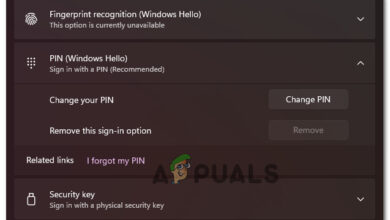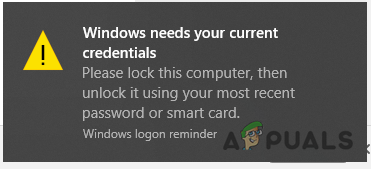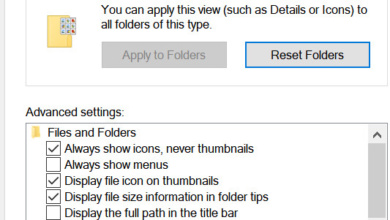How to Hide Administrative Tab in Regional and Language Settings?
The Regional and Language options are located in the Control Panel on the Windows operating system. The Administrative tab in the Regional and Language option contains the system locale settings. The system locale is used to control the language that is used when displaying text on programs that do not support Unicode. However, an administrator can hide this tab from a standard user. It will stop standard users from changing the system locale through the Regional and Language options. In this article, we will provide you methods through which you can easily disable the Administrative tab of Regional and Language options.
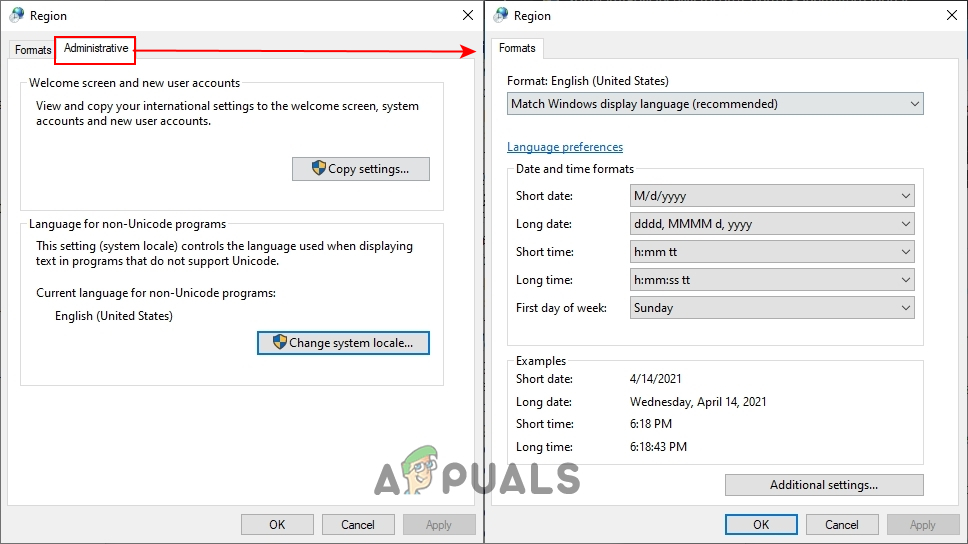
Method 1: Using the Local Group Policy Editor
The Group Policy Editor is a Windows feature through which users can configure different types of settings for their operating system. It contains policy settings for both the computer account and user accounts. An administrator can use this tool to hide the Administrative tab in Regional and Language options. The Group Policy Editor is pretty simple to use, you just need to navigate to the setting and configure it by changing the toggle option. The policy setting for hiding the Administrative tab is located under the User Configuration category. Follow the below steps and see how it works:
Note: This method cannot be used in the Windows 10 Home edition. That is because the Group Policy Editor isn’t available in the Windows Home operating system.
- Open a Run dialog box by pressing the Windows and R keys on your keyboard. Now type “gpedit.msc” in the box and click on the Ok button to open the Local Group Policy Editor.
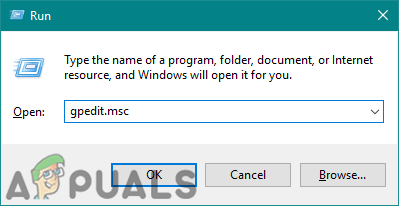
Opening the Group Policy Editor - You need to navigate to the following path in the Local Group Policy Editor window:
User Configuration\ Administrative Templates\ Control Panel\ Regional and Language Options\
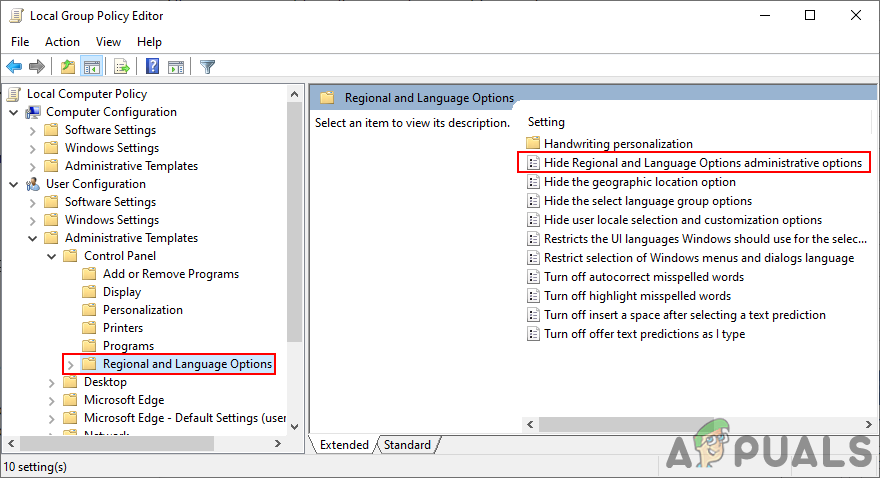
Navigating to the setting - Double-click on the setting named “Hide Regional and Language Options administrative options” and it will open up in another window. Then you need to change the toggle option from the Not Configured to the Enabled as shown in the screenshot.
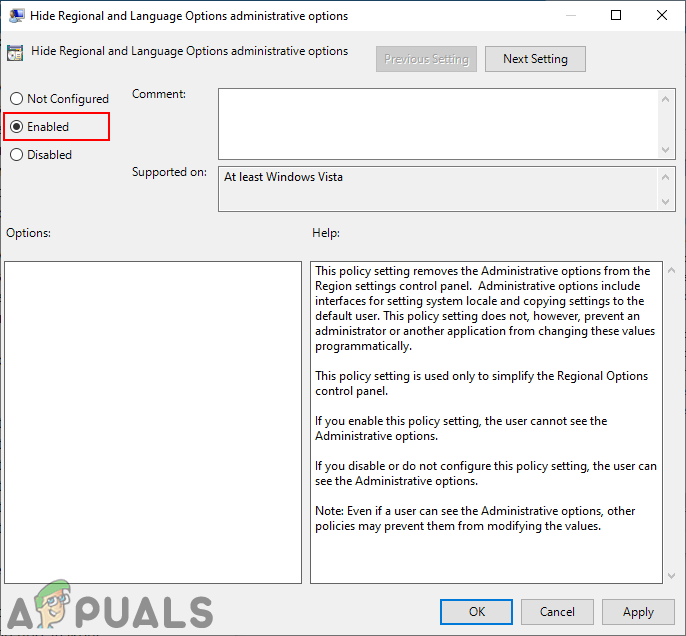
Enabling the setting - Finally, click on the Apply and then the Ok button to save the new changes. Most of the time, the Group Policy will instantly update the changes.
- However, if it does not update the new configurations instantly, then you need to do it manually. Search for Command Prompt in the Windows search feature. Right-click on it and open it as an administrator.
- Now type the following command in the Command Prompt (Admin) to force update the group policy changes:
gpupdate /force
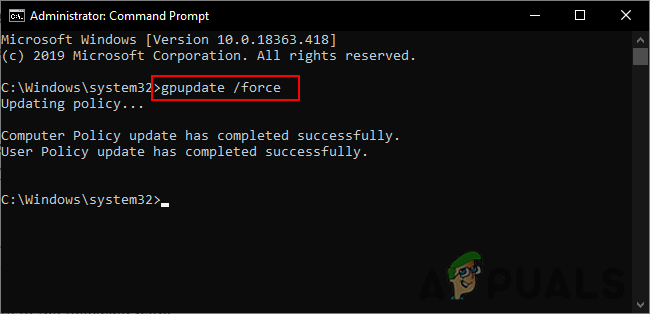
Force updating the Group Policy Note: This can also be done by simply restarting your computer.
- You can always unhide the Administrative tab by changing the toggle option back to Not Configured or Disabled in step 3.
Method 2: Using the Registry Editor
The Windows Registry is a database that stores all the information and settings of your operating system. This is another method through which you can easily hide the Administrative tab from standard users. This is also the only available option for Windows 10 Home users. If you already used the Group Policy Editor method, then your Registry will be automatically updated with the same settings. However, if you are using this method directly, then you need to create the missing key and value for the setting. Follow the below steps and see how it works in the Registry Editor:
- Open a Run dialog box by pressing the Windows + R key on your keyboard. Now type “regedit” and click on the Ok button to open the Registry Editor. Also, if prompted by UAC (User Account Control) dialog, then select the Yes button.
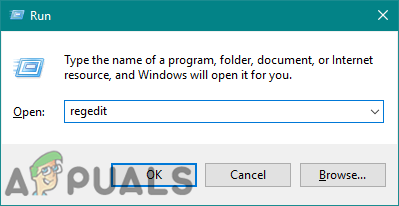
Opening the Registry Editor - You can also create a backup before making any new modifications in the Registry. Click on the File menu in the menu bar and then choose the Export option in the list. Now name the file and select the path for the file. Click on the Save button to save the backup.
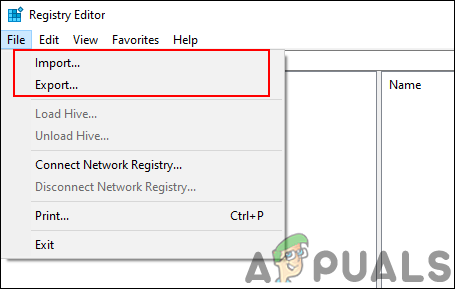
Creating a registry backup Note: You can always recover a backup by clicking on the File > Import option and then selecting the file that you previously saved as backup.
- You need to navigate to the following path in the Registry Editor window:
HKEY_CURRENT_USER\SOFTWARE\Policies\Microsoft\Control Panel\International
Note: If any of the keys are missing in the following path, then you can create them by right-clicking on the available key and then choosing the New > Key option.
- Select the International key, then right-click on the right pane, and choose the New > DWORD (32-bit) Value option. Name this newly created value as “HideAdminOptions“.
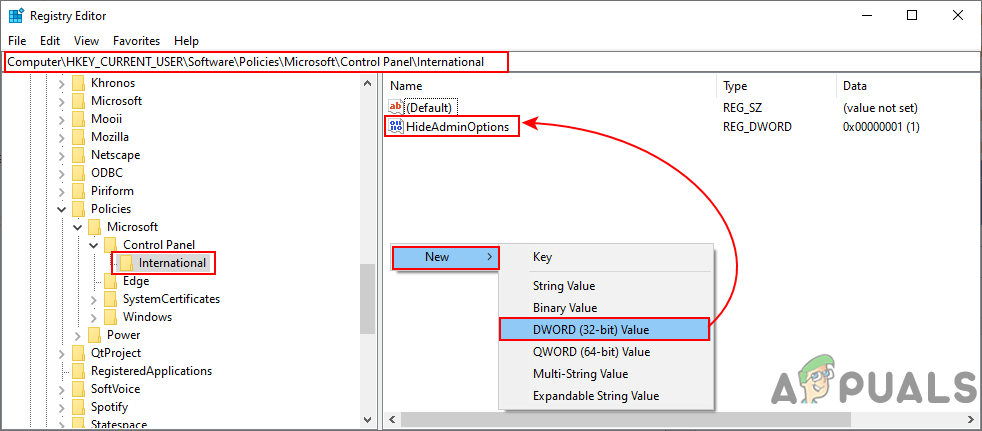
Creating a new value - Right-click on the HideAdminOptions value and choose the Modify option. Now change the value data to 1.
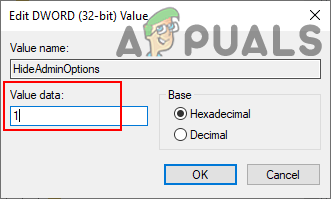
Changing the value data - Finally, after all the configurations, make sure you reboot the computer to apply these new changes.
- You can always unhide the Administrative tab again by changing the value data to 0. You can also simply remove the value “HideAdminOptions” from the Registry Editor.


